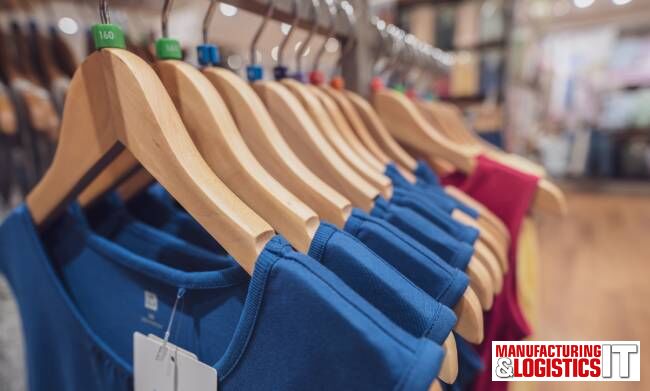At its 2023 European Exchange customer conference, Manhattan Associates Inc. has announced the findings of its latest international omnichannel research.
The findings highlight how retailers are increasingly digitising their in-store offering in efforts to improve customer experiences and maintain market share, at a time where cost-of-living challenges have affected the shopping habits of 89% of consumers.
The changing face of the store
Trending in the right direction, 54% of retailers reported that their customers could buy in-store and return online (50% in 2022), and if the product was out of stock in-store, 48% provided buy online and return in store options (46% in 2022). However, retailers also commented that on average they only had an accurate indication of inventory across their entire operations 70% of the time (down from 74% in 2022).
Shoppers expect all retail touchpoints to be connected, frictionless and increasingly personalised. “If you don’t know where a third of your inventory is, or what it is that you have, that’s a lot of stock that is either not being sold, marked down or at worst thrown away,” commented Henri Seroux, SVP EMEA at Manhattan Associates.
“It’s vital that retailers have solutions with the flexibility and agility to allow them to recognise and act on shifting consumer behaviour in near ‘real-time’. With access to accurate data, retailers can deliver actionable insight into the hands of their associates, enabling them to add value to every customer’s unique path to purchase,” Seroux continued.
Frictionless commerce meets frictionless engagement
It is clear consumers are keen to engage actively cross channels when looking to purchase products and 84% will start their buying journey online (82% in 2022). However, 16% (17% in 2022) of retailers still reported that their organisation’s in-store and online operations continue to run as separate functions, suggesting that while year-on-year, more retailers are offering seamless shopping experiences, there is still room for improvement.
In terms of how consumers prefer to engage with retailers before and after buying a product, overall, email (47%) remains the preferred engagement channel, followed by direct in-person contact with the store team (43%). Interestingly, social media is now the preferred channel of engagement for four in ten (40%) consumers, with this preference more likely amongst younger consumers, peaking with the age group 25-34 at 55%.
Natalie Berg, retail analyst, author, and founder of NBK Retail commented: “The research shows retailers are making progress when it comes to seamless omnichannel experiences. As the role of the physical store evolves past simply the transactional, the roles of associates must also develop beyond purely assisting the sale too. Armed with the right technologies and accurate inventory and customer data, store associates have the power to educate, inspire and ultimately create long-lasting brand loyalty, even during times of economic flux.”
Protecting pockets and the planet
The perception, and at times reality, that green products come at a price premium means that shoppers are deprioritising these purchases in favour of low-cost alternatives with only 45% of consumers considering sustainability an important factor when choosing where to shop, down from 50% last year.
Younger generations are more likely to consider a retailer’s environmental/sustainability efforts compared to older consumers, with 55% of 18–24-year-olds reporting it as a top or important consideration for them. 17% of the 24-35 age bracket went further still and said they would actively avoid retailers if they were not environmentally conscious, compared to only 10% of over 55s saying they would boycott these same brands.
“The future of our planet is not something that we can or should be forced to compromise on as consumers or retailers, yet clearly, in the current economic climate, affordability is taking priority over sustainability. This year’s research highlights how important unification across omnichannel commerce and supply chain is, as an avenue to lessen the economic burden on consumers, but also, as a way to address the longer-term environmental impact unchecked consumerism is having on our planet,” finished Seroux.
Survey Methodology
6,000 adult (18+ years old) consumers were surveyed about their sentiments and attitudes towards the role of the physical store and store associates, innovative fulfilment options, sustainability, inventory visibility, convenience, consistency across channels and the shift in commerce.
1,150 management or senior-level officers in Tier 1 retail organisations (generating more than $100m in annual revenue) were surveyed about their technology-based investment plans to support ecommerce, reduce customer friction and increase fulfilment options. Respondents represented retailers operating stores and online venues in the following sectors: Beauty; Household Goods & Furniture; Consumer Electronics; Healthcare; DIY and Home Improvement; Fashion; Sporting Goods; and Pets. Consumer and retailer respondents were based in the following countries: Australia, Belgium, Brazil, France, Germany, Italy, Mexico, The Netherlands, New Zealand, Spain, UK and USA.
* Research findings of this report are based on primary consumer and retailer research carried out via online surveys from March 2023 to May 2023.
Additional data
- 26% of retailers surveyed said that upgrading to a modern Point of Sale (POS) capable of managing omnichannel scenarios is one of their top three business priorities for the next 12 months compared to 23% in 2022
- 24% commented that store fulfilment capabilities for online orders were a priority, compared to 22% in 2022
- 22% of retailers stated that doing more to minimise the environmental impact of their organisation was a top three priority in 2023 – the same figure as last year
- Consumer consideration for sustainability efforts also varies by country. Mexico stands out as having the consumers with the most consideration of a retailer’s sustainability efforts, with 33%, followed by Brazil with 25% of its consumers saying that they would not buy from a retailer if it was not environmentally conscious
- In New Zealand and the Netherlands, just 5% and 4% (respectively) of consumers say that they would boycott a retailer if it was not environmentally conscious, quite the contrast to LATAM
- 49% of consumers consider the most important aspect of service provided by store associates is having knowledge about the product they are thinking of buying
- 4% of consumers consider having the ability to demonstrate a product and physically show it to them the most important service provided by a store associate
- Younger consumers, however, are more likely to think that having personal experience of products, suggesting other products that complement what they want to buy, or checking stock availability are the most important aspects of a shop assistant’s role
- 40% of retailers say they are most likely to use RFID for stock-related activities, such as maintaining accurate, real-time counts of inventory or locating stock
- With store fulfilment and inventory accuracy continuing to be significant, radio frequency identification (RFID) tags are gaining traction, with up to 20% of retailers surveyed identifying it as a top priority (15% in 2022). However, into 2024, retailers are looking to use this technology more strategically, to analyse footfall trends and improve the checkout experiences (41% respectively) and improve advertising strategies (36%) too
- Traditional manned checkouts are preferred by the majority of shoppers in markets like France (60%) and Germany (52%) while self-checkout is most popular in the UK and New Zealand



